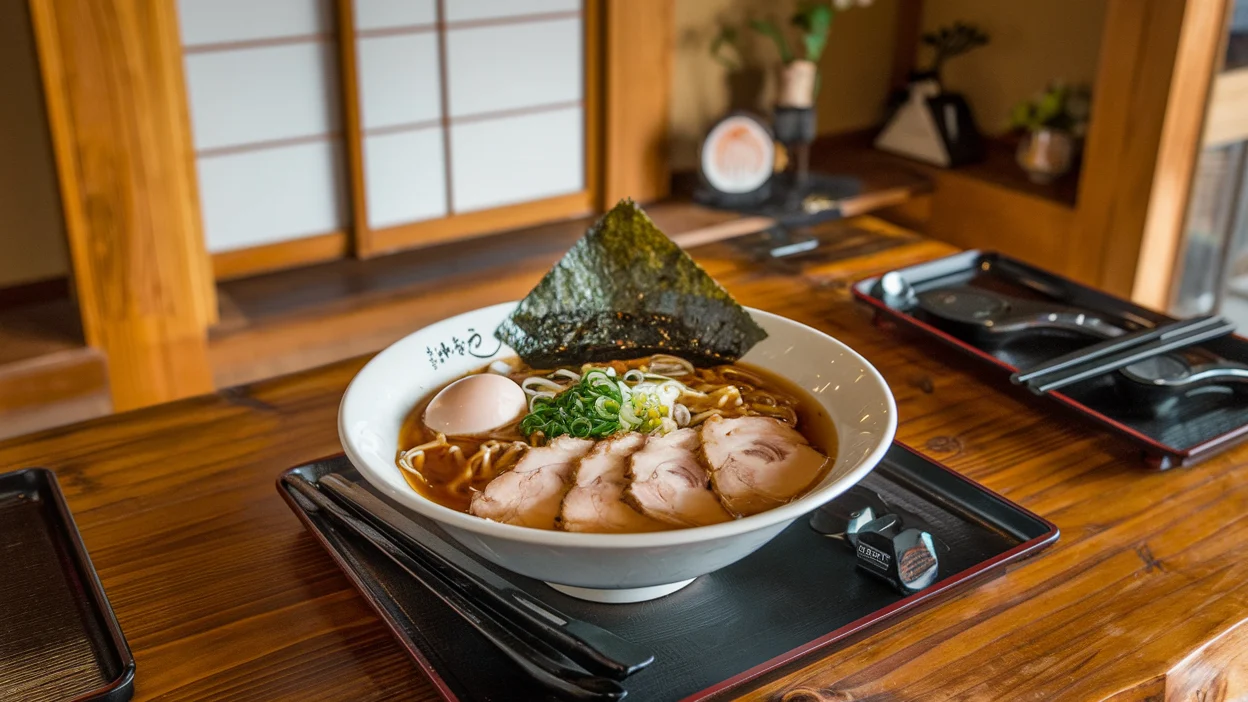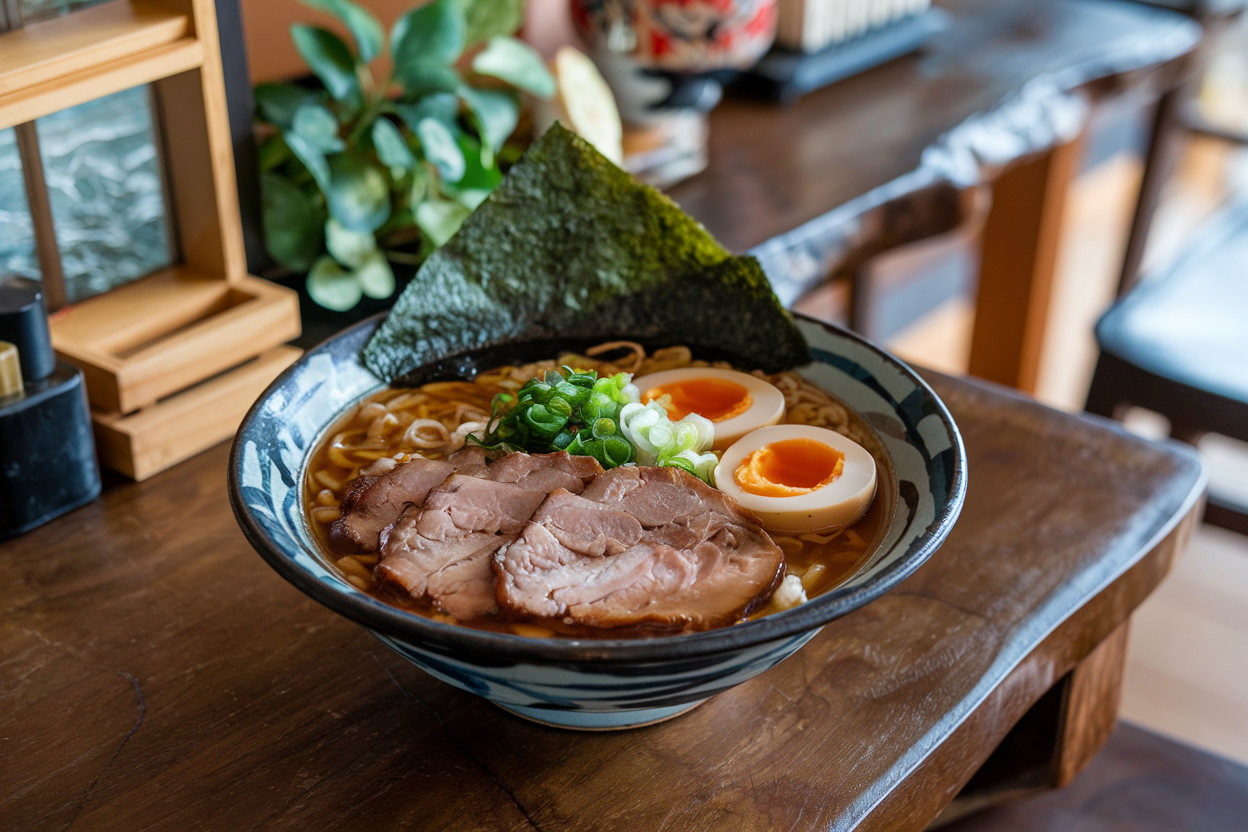Imagine yourself on a chilly evening, the kind that makes you yearn for warmth that comes from more than just a heater. As you step into your kitchen, the aroma of simmering broth wraps around you like a comforting hug. This is the magic of ramen—a dish that goes beyond sustenance to offer a truly soulful experience. If you’ve ever wanted to master the art of creating this Japanese classic, you’ve come to the right place. Let’s dive deep into the world of ramen, uncover its secrets, and learn how to craft the perfect bowl right in your own kitchen.
Table of Contents
What Makes Ramen Special?
Ramen is not just a dish; it’s a phenomenon. From its humble beginnings to its global cult following, this noodle soup has won hearts worldwide. Whether you’re slurping noodles in a bustling Tokyo ramen-ya or enjoying a quiet bowl at home, ramen always feels personal.
A Brief History of Ramen
Ramen originated as a Japanese take on Chinese wheat noodles. By the early 20th century, it had carved its niche as a comfort food in Japan, with each region putting its unique spin on the dish. After World War II, when wheat flour became more accessible, ramen gained popularity as an affordable yet filling meal. In the 1980s, ramen reached global fame, thanks to instant ramen products. Today, it’s celebrated in gourmet circles, with chefs crafting innovative takes on this traditional comfort food.
Types of Ramen You’ll Love
Ramen comes in a variety of styles, each offering something unique:
- Shoyu: A soy sauce-based broth that balances savory and umami notes.
- Miso: Rich and creamy, made with fermented soybean paste, often paired with hearty toppings.
- Shio: The lightest of the broths, with a clean, delicate flavor profile.
- Tonkotsu: A decadent pork bone broth, creamy and hearty, known for its depth of flavor.
- Tsukemen: Dipping ramen, where noodles and broth are served separately.
Regional variations, like Sapporo’s miso ramen (with buttery corn and seafood toppings) or Hakata’s tonkotsu ramen (characterized by thin noodles and a creamy broth), showcase Japan’s culinary diversity.

Ingredients You Need for the Perfect Ramen Recipe
Creating authentic ramen starts with understanding its core components: broth, noodles, and toppings. Here’s what you’ll need:
Essential Ramen Components
- Broth
The soul of ramen. Choose between pork-based, chicken, or vegetarian broths. - Noodles
Fresh ramen noodles provide the ideal texture. Choose thin, curly noodles for shoyu or thick, chewy ones for miso ramen. - Toppings
Customize with chashu pork, ajitama eggs, nori, bamboo shoots, corn, or even pickled vegetables for added crunch and flavor.
Ingredient Table for Easy Reference
| Ingredient | Quantity | Notes |
| Pork Bones (or alt.) | 2 lbs | For Tonkotsu broth |
| Soy Sauce | 1/4 cup | For seasoning the broth |
| Miso Paste | 3 tbsp | For miso-based ramen |
| Ramen Noodles | 2 servings | Fresh preferred |
| Eggs | 2 | For ajitama (marinated eggs) |
| Scallions | 2 stalks | Thinly sliced for garnish |
| Nori (Seaweed) | 2 sheets | Adds umami and presentation |
| Ginger & Garlic | 2-inch/2 cloves | Aromatics for the broth |
Step-by-Step Guide to Making Authentic Ramen
Preparing the Broth
The broth sets the foundation for your ramen. Here’s how to craft a rich and flavorful base:
Tonkotsu Broth
- Rinse pork bones under cold water to remove impurities.
- Boil the bones in fresh water, skimming foam as it rises.
- Simmer for 8-12 hours with garlic, ginger, onions, and scallions for a deeply flavorful stock.
- Season with soy sauce and miso paste for added depth.
Vegetarian Broth
- Combine kombu (dried seaweed) and dried shiitake mushrooms in water.
- Let it soak overnight, then simmer for 1-2 hours.
- Add miso paste and roasted vegetables like carrots and onions for additional flavor.
Cooking the Noodles
Perfect ramen noodles are all about timing.
- Heat a pot of water until it reaches a vigorous boil.
- Cook noodles for 2-3 minutes, depending on thickness.
- Rinse under cold water to stop cooking, then reheat briefly in hot broth just before serving.
Perfecting the Toppings
- Chashu Pork: Slowly braise pork belly in soy sauce, mirin, sake, and sugar until tender and caramelized. Slice thinly for serving.
- Ajitama (Marinated Eggs): Boil eggs for 6 minutes for a soft yolk. Cool immediately, then marinate in soy sauce, mirin, and sugar for at least 4 hours.
- Other Toppings: Fresh corn, bean sprouts, bamboo shoots, or pickled ginger offer unique textures and flavors.
Assembling Your Ramen Bowl
Layering is key:
- Pour the broth into a pre-warmed bowl.
- Add noodles, ensuring they’re evenly distributed.
- Arrange toppings artfully for visual appeal.
- Garnish with scallions, sesame seeds, or a drizzle of chili oil.
Tips and Tricks for Ramen Perfection
Common Mistakes to Avoid
- Overcooking the Noodles: Always boil them separately from the broth. Overcooking leads to a mushy texture that detracts from the experience.
- Over-seasoning the Broth: Balance is crucial; a well-seasoned broth enhances but doesn’t overpower.
Ramen Hacks for Home Cooks
- Quick Flavor Boosts: Use pre-made chicken stock and elevate it with garlic, ginger, and a splash of soy sauce.
- Easy Toppings: Grilled chicken, tofu, or even a poached egg can be quick and satisfying alternatives to traditional chashu pork.
Pairing Ramen with the Perfect Side Dish
Enhance your ramen experience with sides that complement its flavors:
- Gyoza (Japanese Dumplings): Pan-fried and savory, these are a classic ramen pairing.
- Seaweed Salad: Light and refreshing, with a touch of sesame.
- Karaage (Japanese Fried Chicken): Crispy and flavorful, offering a satisfying crunch alongside your ramen.
FAQs About Ramen Recipes
Can I Make Ramen Broth Vegetarian?
Absolutely! Replace meat with kombu, shiitake mushrooms, and miso for a satisfying vegetarian broth.
What’s the Best Way to Store Leftovers?
Keep noodles and broth separate. Store the broth in an airtight container in the fridge for up to three days.
How Do I Make Gluten-Free Ramen?
Opt for gluten-free noodles (like rice or soba) and use tamari instead of soy sauce.
How Can I Add Spice to My Ramen?
Stir in chili oil, sriracha, or a dash of red pepper flakes to taste.
What Is the Best Way to Achieve a Creamy Tonkotsu Broth?
To get the rich, creamy texture of authentic tonkotsu, boil pork bones vigorously for hours, allowing collagen to break down and emulsify with the fat.
Your Ramen Journey Awaits
You now have everything you need to create a ramen masterpiece. Whether you’re crafting a hearty tonkotsu or a light shoyu, the key is to make it your own. Experiment with toppings, play with seasoning, and don’t be afraid to put your twist on tradition.
Ready to try your hand at ramen? Gather your ingredients and get started today! Showcase your creations by sharing them in the comments or tagging us on social media. And if you’re hungry for more recipes, subscribe to our newsletter for weekly culinary inspiration.
This guide has everything you need to turn your kitchen into a ramen-ya, crafting bowls that not only satisfy but celebrate the artistry of Japanese cuisine.

